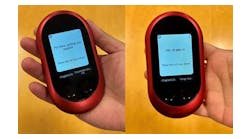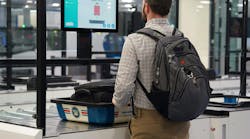Airports across the country continue to face new challenges. Societal and technological advances have the potential to radically change current airline protocol. Identity management within airports is changing as states across the country are adopting a comprehensive digital identity solution for their citizens. Digital driver’s licenses, e-passports, and other secure digital documents will make travel easier for many, but will also introduce additional challenges in authentication and the verification of travelers. Airlines must prepare for the challenges that lie ahead. Adapting a comprehensive digital solution to identity management is essential.
The shift toward digital identity technology is not the only thing on the minds of airport executives. Congress held hearings this summer on the inefficiencies of airport security. Public employee unions are calling for the hiring of more TSA staff. Many believe hiring more TSA agents is the answer to increasing airport efficiency, but this could not be further from the truth. As identity management goes digital, many airports are turning to automation as the answer.
Airline automation is already occurring through passenger processing, online check-in, and self-baggage drops that are becoming more widespread. This shift toward automation will only increase in the future, as passengers continue to expect a more streamlined air travel process. Recent regional tensions and terrorism incidents can make it difficult for airports to prioritize speed of airport security checks. Safety and security must always come first.
Efficiency doesn’t have to suffer at the hands of safety precautions. To ensure both, airlines across the U.S. must implement a combination approach that combines digital technology with advanced airport capabilities like automation. A combination approach is the best --and only– way to ensure that both safety and efficiency are maximized as airlines continue to adapt to emerging technology.
Any solution to efficiency must also balance the need for security. Any solution must address the following concerns:
- Privacy
- Integrity of secured data and credential management
- Citizen control of displayed information
- Compatibility across all technology and mobile devices
Privacy continues to be one of the biggest concerns surrounding both DDLs and airline automation. Technology has the potential to improve both the speed and security of airline travel, but many people remain skeptical. Making sure that travelers’ personal information is not compromised when going through airport security is essential to a comprehensive airport security system. Passengers want a streamlined air travel experience, but they also want to ensure that their personal data will be protected as they move quickly through airports.
Integrity of secured data and credential management is another major concern that airport executives must keep in mind. The combination of a digital driver’s license AND a physical identification document is essential for travelers and airport security. Having a digital driver’s license does not reduce the need for a physical ID. On the contrary, a combination approach to identification is the only way to ensure both proper identification and efficiency. Airports may be presented with digital IDs, but should expect travelers to also have a physical ID with them that can be presented for verification if necessary. Dual identification systems ensure maximum security, but can slow down the TSA process if not properly implemented. Airports must adopt to this new technology or risk falling behind the digital curve.
Citizen control of displayed information is essential. Advanced TSA screening systems are necessary to increasing airport efficiency. These new technologies must also give travelers the autonomy to control how much of their personal information is available when they go through airport security. The benefits of the shift towards DDLs will only be realized if travelers feel comfortable using their digital identification documents when traveling.
Compatibility across all technology and mobile devices is essential for both airports and passengers moving forward. Any long-term solution must include a strategy to both automate and incorporate digital identity technology. Airlines must address these concerns as part of any digital solution to identity management. The majority of travelers use their driver’s license as their primary form of identification when going through airport security when traveling domestically, so this shift will have a direct impact on airports across the country, as they strive to manage both safety and efficiency during travel and border management. The most immediate concern for airports is implementing the technology needed to read and differentiate digital driver’s licenses and passports. For the long term, a comprehensive approach that includes the technology needed to read digital identification documents, combined with advanced automation processes, is essential to making sure that airports meet expectations of efficiency from travelers without sacrificing security.
A streamlined digital, automated airport security process is the future. Shifting to an integrated approach that combines the technology needed to identify and manage digital identities with automated border security management systems is the best way to maximize both efficiency and safety in airports for all travelers.
Neville Pattinson in the Senior Vice President of Government Affairs at Gemalto. In this role, he is responsible for North America Government Affairs and Business Development. He is a leading expert on smart cards and using the microprocessor chip to keep identity credential data and biometrics secure and private. He’s been heavily involved in planning and implementing a number of federal government security initiatives including the Dept. of Defense Common Access Card (CAC); State Dept.’s Electronic Passport; Transportation Dept.’s Transportation Worker Identity Credential (TWIC).
He can be contacted at: [email protected]



